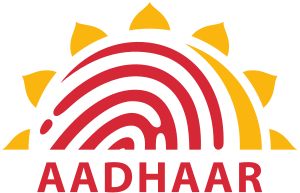 The Ripon Building is the seat of the Chennai Corporation (Madras Corporation) in Chennai (Madras), Tamil Nadu. It is a fine example of the Indo-Saracenic style of architecture, a combination of Gothic, Ionic and Corinthian. The Ripon Building is an all-white structure and is located near the Chennai Central railway station.
The Ripon Building is the seat of the Chennai Corporation (Madras Corporation) in Chennai (Madras), Tamil Nadu. It is a fine example of the Indo-Saracenic style of architecture, a combination of Gothic, Ionic and Corinthian. The Ripon Building is an all-white structure and is located near the Chennai Central railway station.History
Commissioned in 1913, Ripon Building was built by Loganatha Mudaliar and took four years to build at a cost of  750,000, including a sum of
750,000, including a sum of  550,000 paid to Mudaliar. The Ripon building was named after Lord Ripon, Governor-General of British India and the Father of local self-government. Earl of Minto, the then Viceroy and Governor General of India laid the foundation on 12 December 1909. The Municipal Corporation of Madras, after functioning from several other places including Errabalu Chetty Street, settled at Ripon building in 1913, with P. L. Moore as the President of the Municipal Corporation at the time of the inauguration. The inaugural function was attended by over 3,000 of the city's elite.
550,000 paid to Mudaliar. The Ripon building was named after Lord Ripon, Governor-General of British India and the Father of local self-government. Earl of Minto, the then Viceroy and Governor General of India laid the foundation on 12 December 1909. The Municipal Corporation of Madras, after functioning from several other places including Errabalu Chetty Street, settled at Ripon building in 1913, with P. L. Moore as the President of the Municipal Corporation at the time of the inauguration. The inaugural function was attended by over 3,000 of the city's elite.
Building details
The building is rectangular and is 85 metres (279 ft) long and 32 metres (105 ft) wide with a 43 metres (141 ft) central tower containing a clock 2.5 m (8.2 ft) in diameter. The first of its three floors has approximately 2,800 m2 (30,139 sq ft) of space. The walls were constructed with stock bricks, set and plastered with lime mortar and the roof is supported with teak wood joists. The original flooring of the ground floor was Cuddapah Slate that has been replaced with marble. One of the main attractions of the building is the Westminster Quarter chiming clock. This was installed by Oakes and Co. in 1913. The clock has a mechanical key system, which is wound every day. There are four bells, which were cast by Gillet and Johnston in 1913.
Restoration
In 2012, a massive renovation was initiated at a cost of  77 million under the Jawaharlal Nehru National Urban Renewal Mission (JNNURM), to preserve the building's original grandeur. Under this, an annexe building measuring 12,540 sq m will be constructed alongside the main structure to house all the departments of the Corporation and all structures in the premises that do not blend in with the main structure aesthetically will be demolished in June 2013 when the annexe building is completed. The annexe building, with an auditorium to seat 500 persons, will be built in a contemporary and post-modern style, highlighting with elements of regional architecture, to blend with the Indo-Saracenic style of the main building. The main building is also being renovated under the process with the use of lime mortar for plastering. It is the first heritage building in the country to have received funds from JNNURM for renovation.
77 million under the Jawaharlal Nehru National Urban Renewal Mission (JNNURM), to preserve the building's original grandeur. Under this, an annexe building measuring 12,540 sq m will be constructed alongside the main structure to house all the departments of the Corporation and all structures in the premises that do not blend in with the main structure aesthetically will be demolished in June 2013 when the annexe building is completed. The annexe building, with an auditorium to seat 500 persons, will be built in a contemporary and post-modern style, highlighting with elements of regional architecture, to blend with the Indo-Saracenic style of the main building. The main building is also being renovated under the process with the use of lime mortar for plastering. It is the first heritage building in the country to have received funds from JNNURM for renovation.




